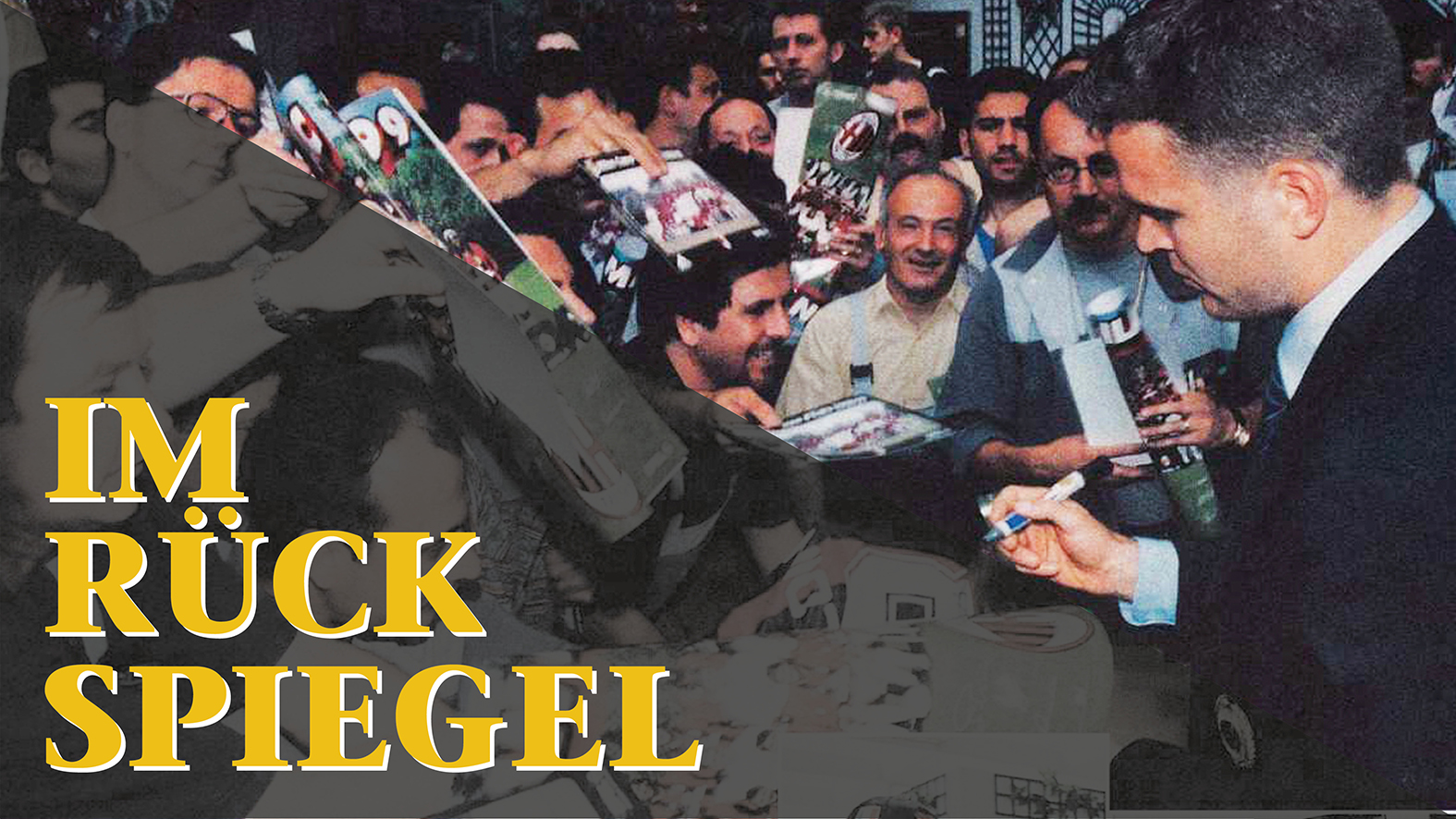*/
]]>

A guest at the factory: Oliver Bierhoff, under contract with AC Milan in 1999, signs autographs in the K40.
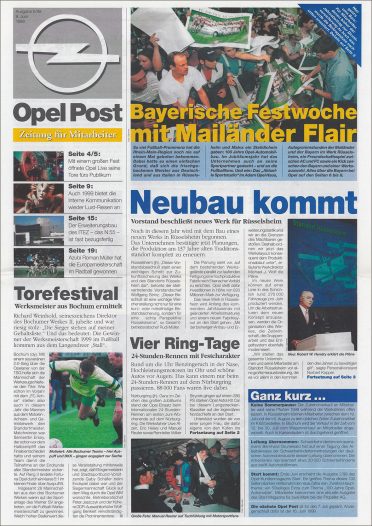
At Opel’s around at full throttle into the millennium
It’s the year 1999. Opel sets the course for the future. The board decides to build a new factory in Rüsselsheim. There is also a lot going on in the company. The automobile production has become 100 years old, that also wants to be celebrated extensively. And: FC Bayern München has become German champion for the 15th time in the tenth year of its partnership with Opel, which also entails some special events – for example, “Das aktuelle Sport-Studio” will be broadcast from the Adam Opel Haus on this occasion. Which provides the Opel Post editorial department plenty of material for a varied, jam-packed June issue.
100 years of automobile production The biggest racing successes
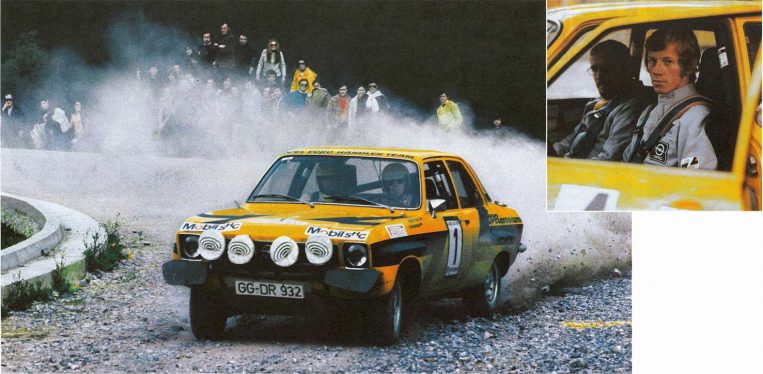
Legends: Walter Röhrl and his 206 hp Ascona.
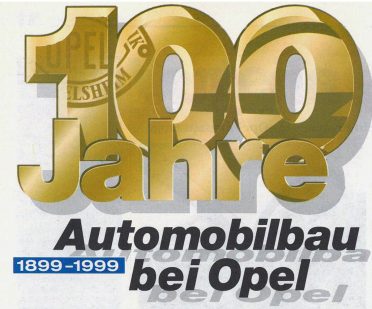
The centenarian gives the Opel Post gas. Already the year before, the employee newspaper launched a 20-part series presenting the most important Opel models of the century. Episode 19 will be released in June 1999. This reviews the successful racing years of the late 60s and 70s. There is a reunion with Cadet, Commodore and Ascona – and of course with legends like Walter Röhrl, who won the 1974 European Rally Championship for Opel, in a 206 hp Ascona. Incidentally, after a break of 30 years in 1969, the company had once again become involved in racing. Some Opel models had already caused a furore on the slopes, piloted by privateers without official support. In particular, the agile cadet had profiled as a favorite fright and subscription winner in his class.
Masterly: The Bayern celebrate at Opel Sport Studio talkt in the Opel Foyer
The Bavarians come, and the ZDF moves to Rüsselsheim. Since when is the receptionist at the Adam Opel Haus named Michael Palme? Why does this well-known melody of the Frankfurt jazz singer Volker Kriegel sound on a Saturday night at 9.50 pm in the foyer? And who installed this station clock? Quite simply: “The current sports studio” of ZDF has moved completely with staff and equipment from Mainzer Lerchenberg to Rüsselsheim. Why? FC Bayern Munich has recently become German champion for the 15th time, in the tenth year of its partnership with Opel – the company that just turned 100 years old. This may also be celebrated in the rooms of the sponsor. Moderator Wolf-Dieter Poschmann welcomes the almost complete team with coach Ottmar Hitzfeld and management in the foyer and elicits a lot of informative details from the kickers in the talk. For example, with which isotonic drink Mario Basler prefers to keep: “Erdinger Weissbier”.
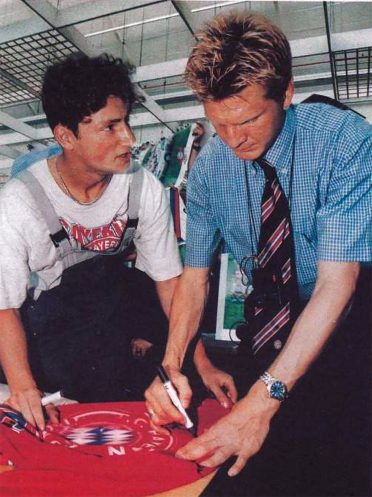
Sign your name: Stefan Effenberg signs autographs in the factory.
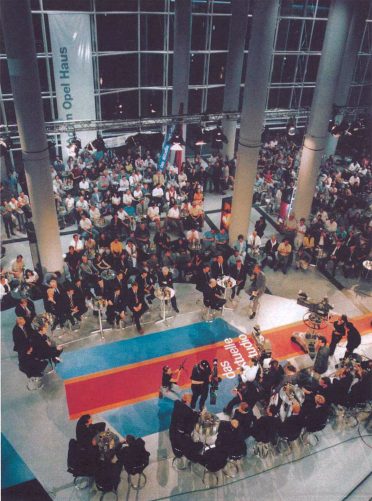
Attention, recording: The Bayern talken in the Opel foyer. 500 employees were there.
In Mainz Bruchwegstadion there is also a friendly game between FC Bayern and AC Milan, which has also accumulated this season with Opel jerseys – and became champions in Italy. In this context, the players of both teams also visit the Rüsselsheim plant to sign autographs.
Anyone can do “Green Meadow”. The new Opel plant is built in the old way
It’s official in May 1999: Opel is building a new plant in Rüsselsheim. But not off the green field, which would simplify much. Immediately at the headquarters, parallel to the current production, a new body shop and a new finished and final assembly are to be created by 2002.
As part of a major press conference, CEO Robert W. Hendry explains to media representatives from all over Germany why: “In Rüsselsheim, we have a well-grown, qualified and highly motivated workforce whose expertise we can build on. And in the interplay of the production plant, component manufacturing, ITEZ, purchasing and the other central areas, we have an infrastructure that we do not find anywhere else in Europe. “
“Our goal is a lean production with the highest quality and a consistently reduced to the necessary amount of time, area, storage and transport capacity per unit,” adds factory director Michael J. Wolf. Since the company had reached the limits of feasibility with its existing expansion strategy, “we are systematically aligning the factory layout with the production process.”
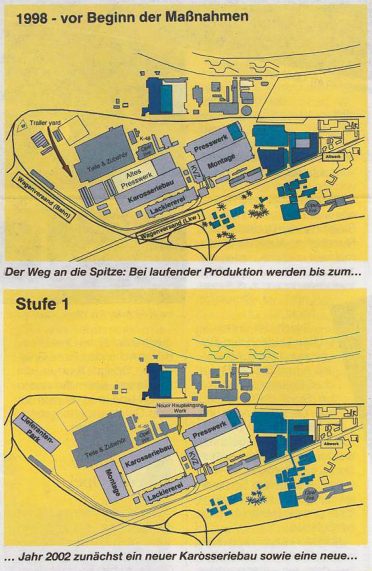
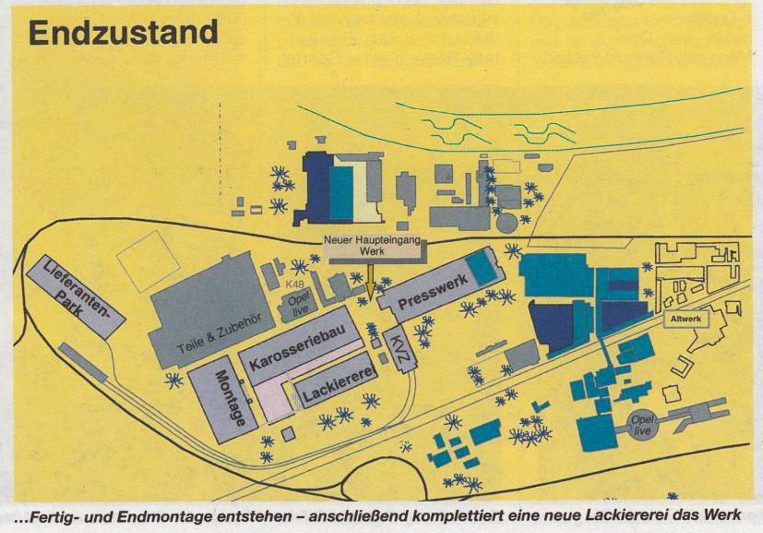
Curve star Opel Speedster goes into production
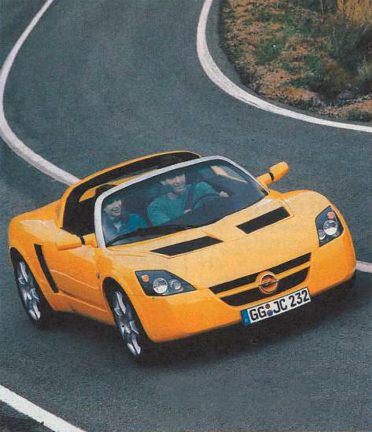
Puristic two-seater: The top speed is 217 km / h.
The Opel Post editorial calls him teasingly the “Opel-Flitz”. This refers to the Opel Speedster, a roadster that had previously been presented at the Geneva Motor Show as a concept car and had caused quite a stir. Now Opel announced: Under 900 kilograms heavy two-seater goes into production. The combination of aluminum chassis and glass-fiber reinforced plastic cover gives it its low weight. The mid-engine, a 108 kw / 147 hp engine, accelerates the purist two-seater in just six seconds to 100 and provides pure driving pleasure.
In March 2001, the first manufactured Opel Speedster leaves the Lotus plant in Hethel / England. On the island he comes as Vauxhall VX 220 on the market. By July 2005, 7,207 copies will be produced.
Here you can see the complete Opel Post issuefrom June 1999 download.
June 2019
Text: Eric Scherer
